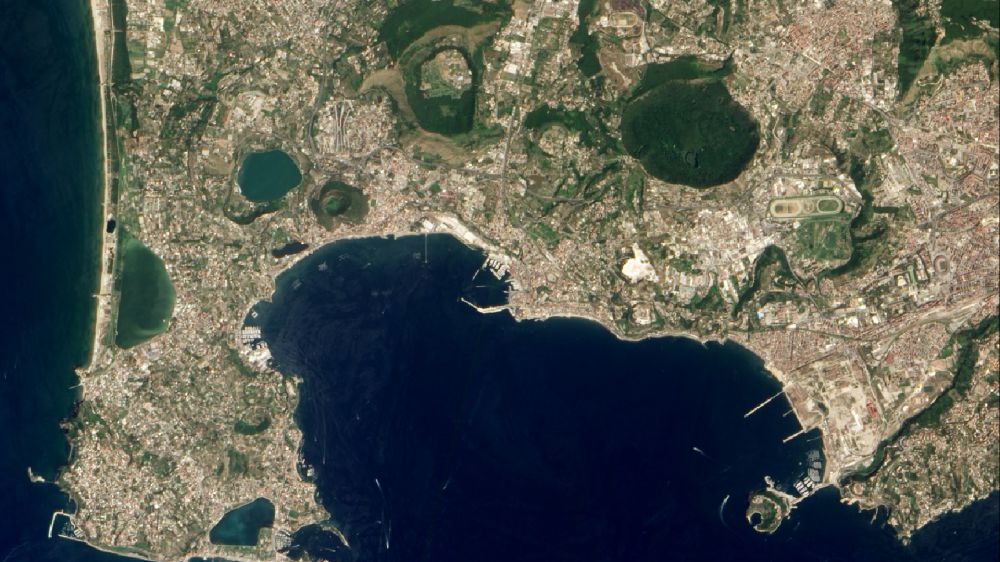There is a possibility that the super-volcano Campi Flegrei, or the Phlegraean Fields, may erupt soon in Italy. This is indicated by observations of earthquakes and surface uplift. In the event of a large-scale eruption, ash could cover the entire Europe.

Campi Flegrei may wake up
The Phlegraean Fields, or Campi Flegrei, are located on the southern coast of Italy, near the Bay of Naples. They consist of a series of giant calderas, which are depressions formed by the complete collapse of a volcano cone. Their diameter ranges from 12 to 14 km.
Approximately 39,000 years ago, a massive eruption occurred in the Phlegraean Fields. Simultaneously, Chumetul-Mare in the Romanian Carpathians and Mount Kazbek in the Caucasus also erupted. As a result, the entire territory of Europe, up to the Ural Mountains, was covered with a layer of ash reaching up to one meter in thickness.
Moreover, the eruption caused a volcanic winter. The average annual temperature in Europe dropped by 5-10 degrees. However, since then, the Phlegraean Fields have become much calmer, with occasional emissions of smoke, steam, and earthquakes.
Changes on the Phlegraean Fields
The last eruption of the Phlegraean Fields occurred in 1538, but volcanic activity remained relatively localized. Currently, nearly 360,000 people live directly within the caldera area, including the city of Pozzuoli.
Over the past decades, seismic activity has been continuously observed in the Phlegraean Fields. The surface in this area is also slowly rising at a rate of up to 10 cm per year, which scientists attribute to the slow filling of underground reservoirs with magma.
The lead author of the research, Professor Christopher Kilburn, states: “Our new study confirms that the Campi Flegrei volcano is approaching a critical stage. However, this does not mean that an eruption is guaranteed. The critical stage could open a crack in the Earth’s crust, but for an eruption to occur, magma still needs to be expelled in the right place.”
Scientists claim that they presented a model of the future behavior of the supervolcano back in 2017, and the observations of recent years have confirmed its validity. Earthquakes in this area have become more frequent, indicating increasing magma pressure in the underground reservoirs. At the same time, the strength of the rock formations decreases.
What are the potential consequences of an eruption?
Dr. Nicola Alessandro Pino from the Vesuvius Observatory, representing an international volcano monitoring organization in Naples, says: “Our results show that parts of the volcano are becoming weaker. This means it can collapse even if the stress that fractures it is less than during the last crisis 40 years ago.”
The exact consequences are uncertain. According to experts’ estimates, the Phlegraean Fields are capable of generating an eruption that would eject up to 1,000 km³ of volcanic rock into the air. This could lead to global climate changes similar to those that occurred 39,000 years ago. However, it is also possible that the event will have smaller-scale effects, similar to what happened in 1538.
Based on materials from scitechdaily.com.

